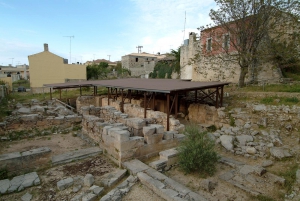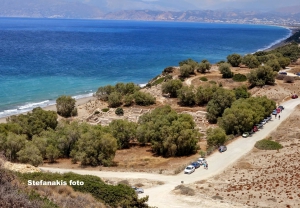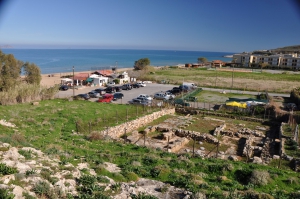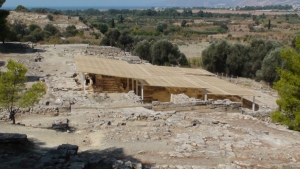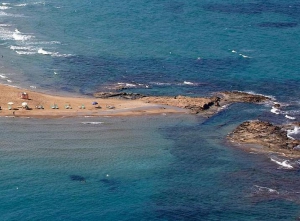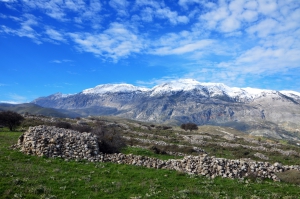The palace of Archanes is located in the suburb Tourkogitonia of Archanes town. It came to light only in 1964 by Giannis Sakellarakis because, by then, only a few traces of the palace had been found. Some parts of the palace are still below the houses of modern Arhanes.
The Late Minoan vaulted tomb of Maleme is located very close to the German military cemetery and the historical airport of Maleme. The tomb was already been looted since the early 20th century and was badly damaged by a bomb during the Battle of Crete.
The archaeological site of Kommos is located 4km west of Phaestus, near Pitsidia and Matala. Kommos (or Komos) was a small Minoan town founded in 2000BC and served the port needs of Phaestus, with which it was linked by road. Kommos was probably destroyed by an earthquake in 1700BC, but survived up to the Hellenistic period.
At the east side of the long Karteros bay there is the small hill of Paleochora that hosted the Minoan settlement of Amnissos. The name is mentioned as a-mi-mi-so in the Linear B tablets. Amnisos findings include a Minoan harbor, several buildings and an outdoor archaic sanctuary, where Zeus was worshiped. The habitation Amnisos started in the 19th century BC.
At the banks of the river Geropotamos, at position Agia Triada, the Minoans built a small palace that was excavated by the Italian Archaeological School at Athens in 1902-1914. This Royal Villa was built in the 16th century B.C. (New Palace period) and was probably used as a summer villa for the king of Phaestus or as permanent residence after the destruction of Phaestus palace in 1450BC.
Vathipetro is a very small settlement located 4km and 20km south of Archanes and Heraklion, respectively, in a location with spectacular views to Jiouchtas Mount and the vineyards south of it. Next to the village and the road connecting Arhanes to Ligortynos, a Minoan mansion has been excavated.
At the east end of the long beach of Vathianos Kambos (Agii Theodori site) there is a rocky peninsula where we still can distinguish the carved rock that hosted a large shipbuilding yard during the Minoan Era. According to researchers this large carving with length of 48 meters and width of 11 meters, could produce 50m long ships, while on the south there is a smaller carving that probably was used for storing lumber. It is worth noting that the area around has sunk over the centuries the sea and there are bases of Minoan buildings inside and out of the sea. The carving probably flooded with water when the ship was ready to get lowered in water.











